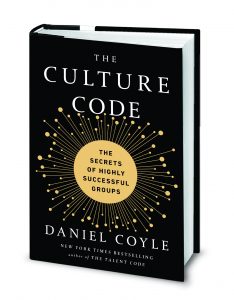
Wanted to let you know that The Culture Code is officially out today in hardcover, ebook, and audio. Love to hear what you think; you can find me on Facebook here, LinkedIn here, and on Twitter here.
A lot of people have asked me where the idea originally came from. And there are a lot of valid answers to that question, because, like you, I bump into the mysteries of group culture all the time. But when I think back, it all started with a tennis ball.
Let me back up a sec. It was about ten years ago. I was at a ramshackle indoor tennis court outside Moscow, at a legendary club called Spartak, researching talent development systems. I was observing a dozen kids hitting balls under the supervision of an imposing 77-year-old coach named Larisa. Then, out of the corner of my eye, I see the outer door squeak slowly open, and a new student walks in. She’s perhaps twelve. This is her first day; she’s carrying a racquet in a plastic shopping bag. Her eyes are wide, alert, on edge.
That’s when Larisa walks over.
Larisa is all warmth. She says, Welcome, I’m glad you’re here. The girl responds shyly. And then Larisa reaches in her pocket and pulls out a tennis ball, presenting it as if it were a precious stone. Then Larisa raises her eyebrows a notch: get ready. Then it happens: Larisa tosses the ball to the girl, and the girl catches it. Larisa smiles with delight. So does the girl.
The whole exchange takes all of ten seconds. But in that toss of the tennis ball — in that simple interaction — the girl stopped being an outsider and started belonging to the tribe. Larisa transformed this ordinary moment into something powerful, a doorway. And I saw a deeper truth: all of the remarkable talent here originated with, and utterly depended on, these moments of connection, belonging, and culture.
That tennis ball sent me on this journey to find out how leaders in other groups create connection, cohesion, and chemistry. I spent the past five years visiting some of the planet’s top-performing cultures (Pixar, San Antonio Spurs, SEALs Team Six, Zappos, IDEO, and a Serbian gang of jewel thieves, among others). The book explores a new way of thinking about culture, and delivers tips on improving leadership, cohesion, and performance. It was a complete blast to research and write; I can’t wait to hear what you think.